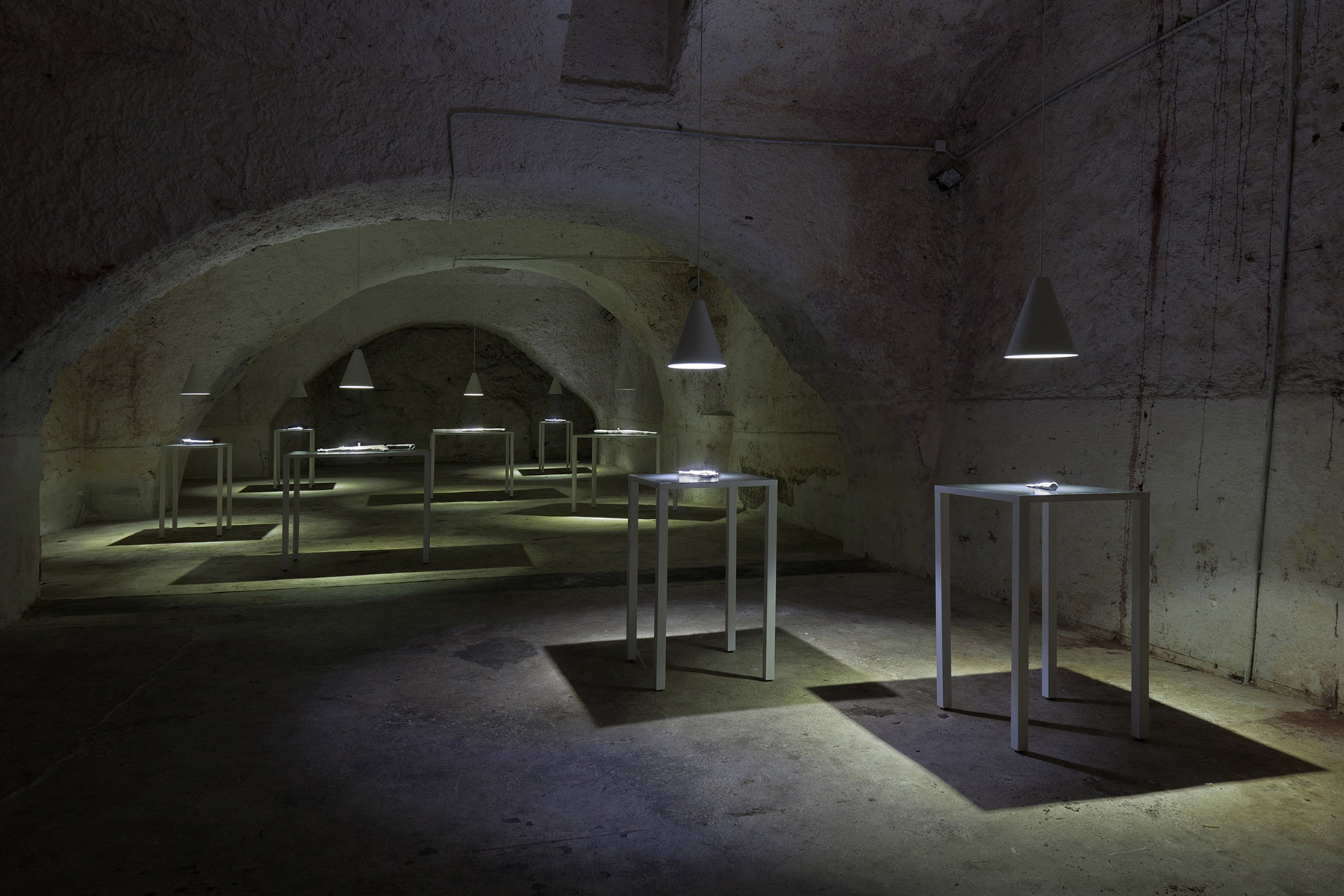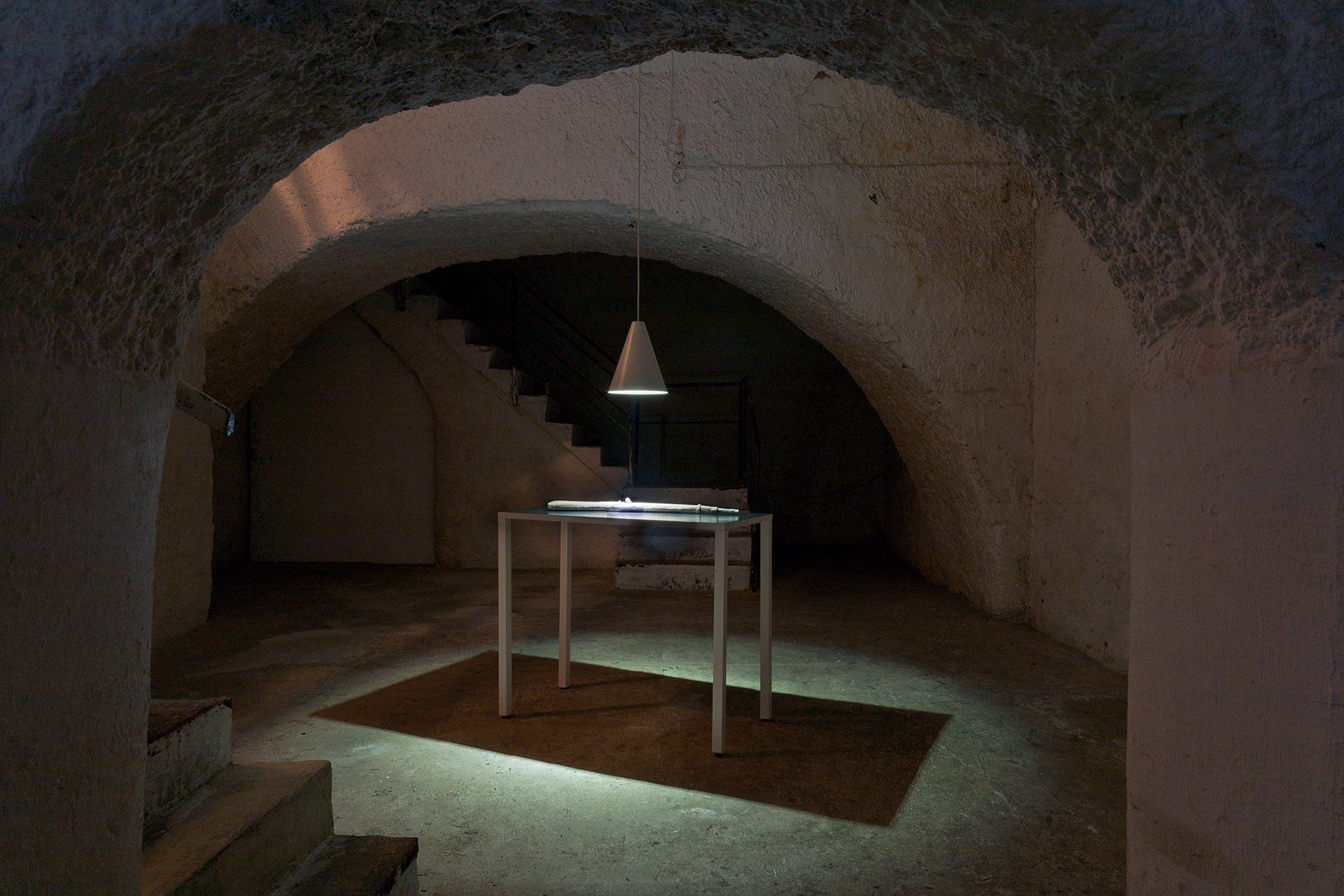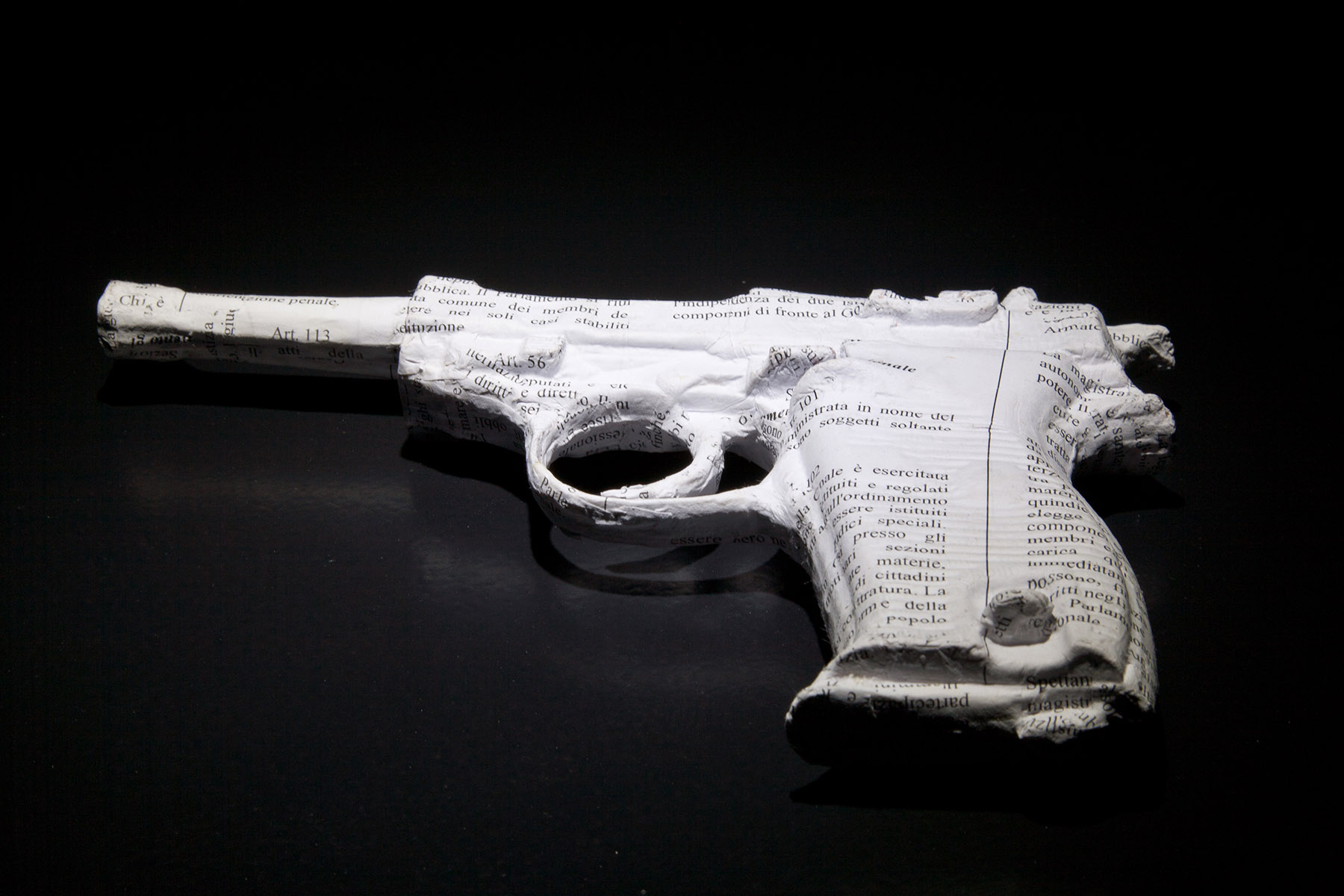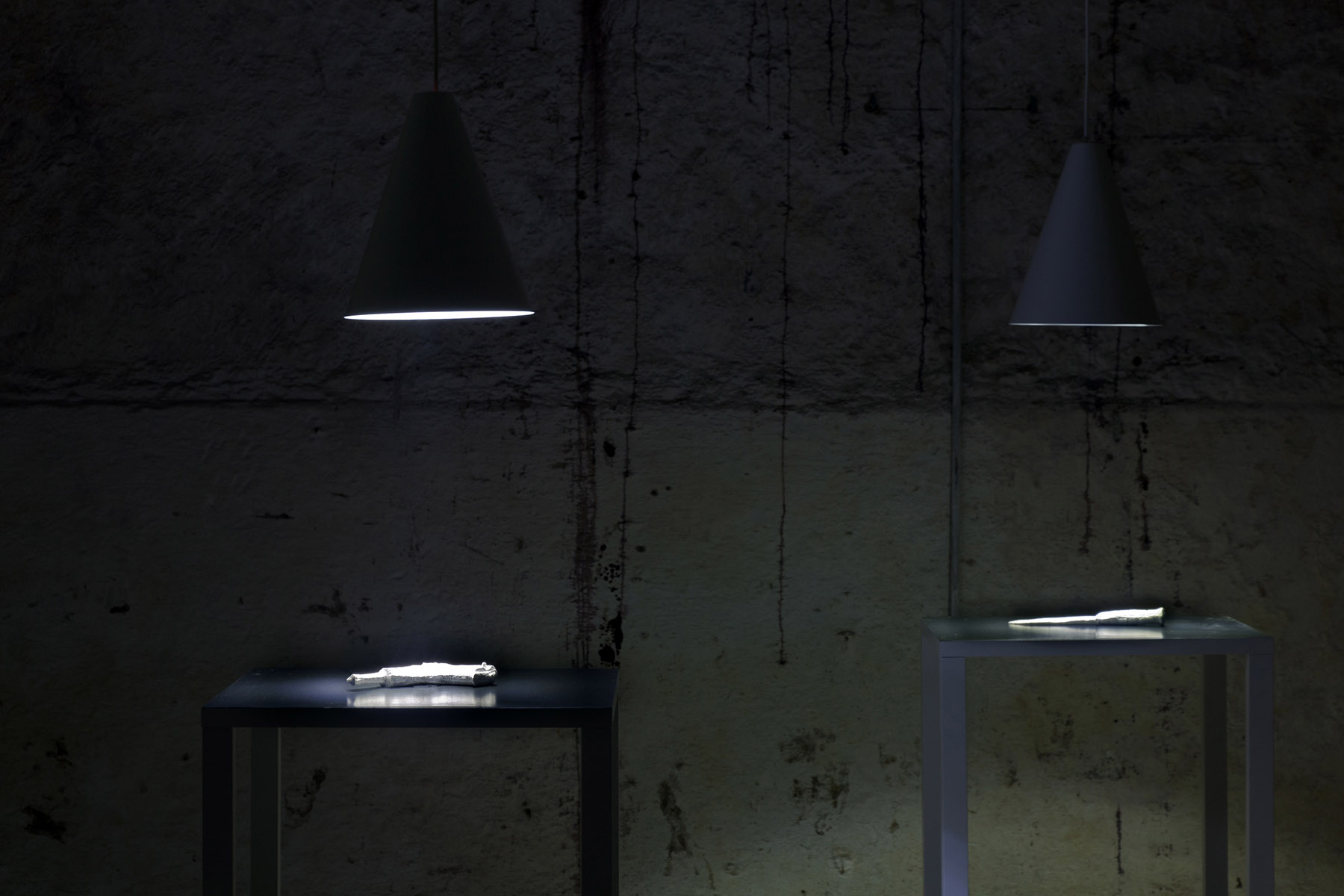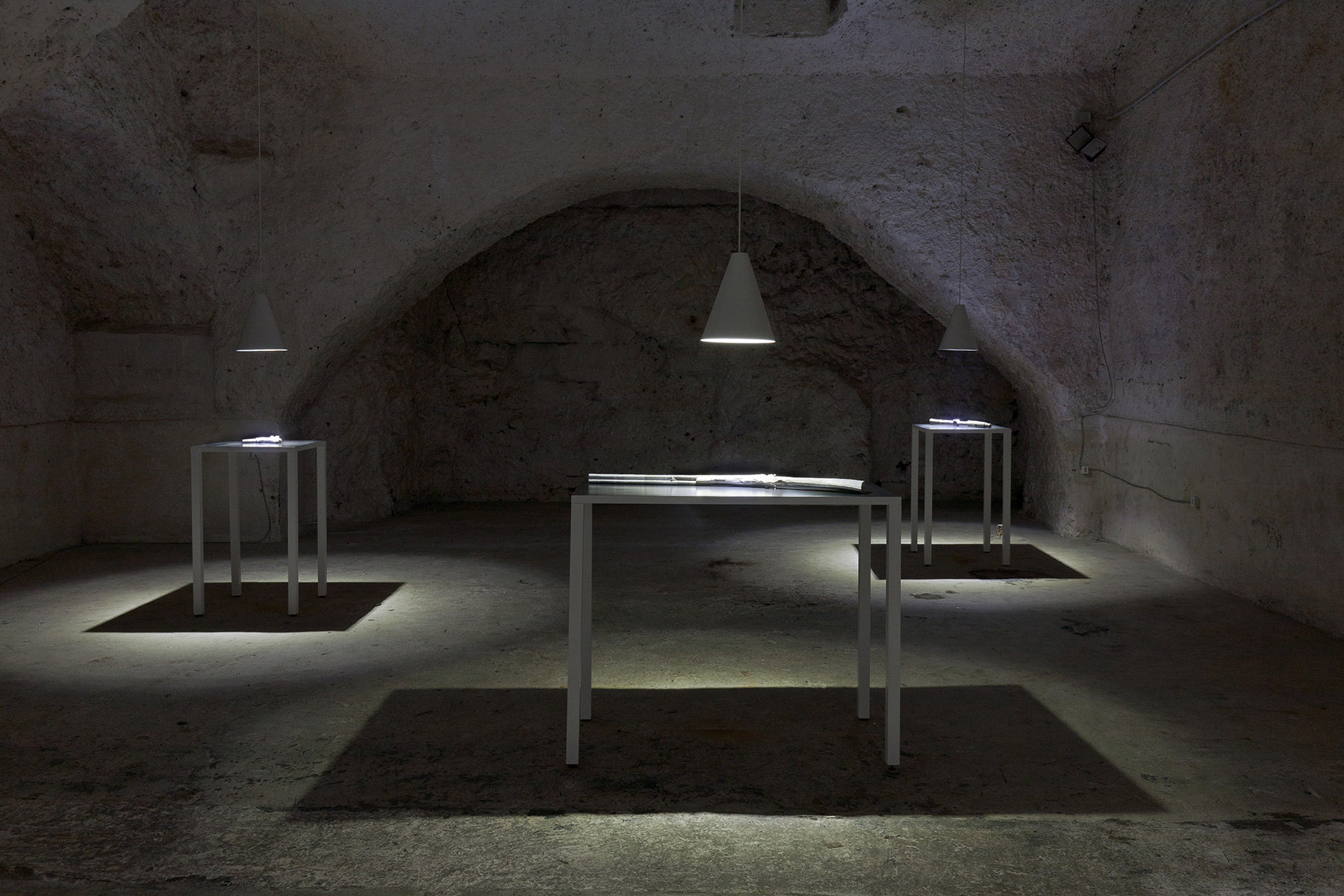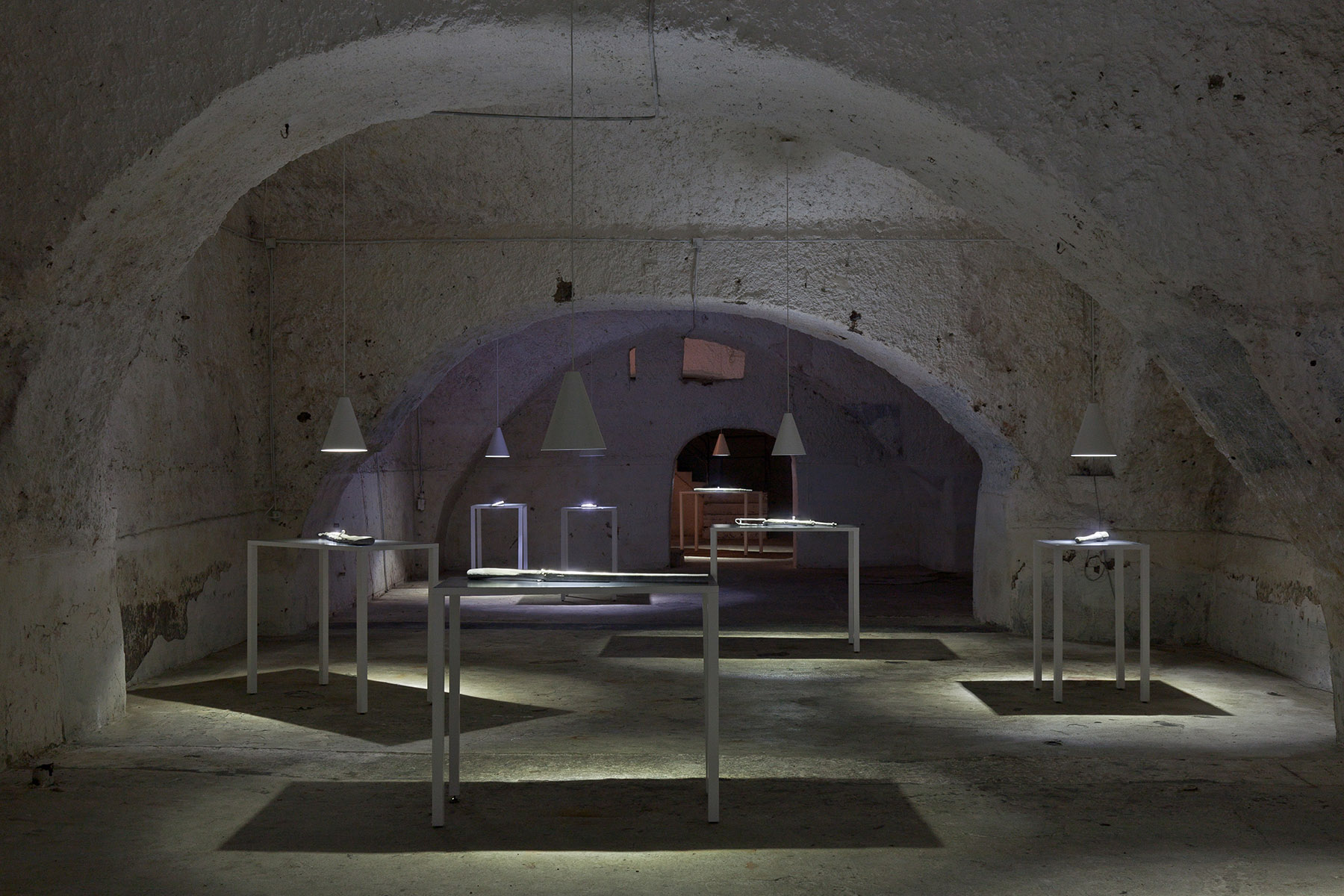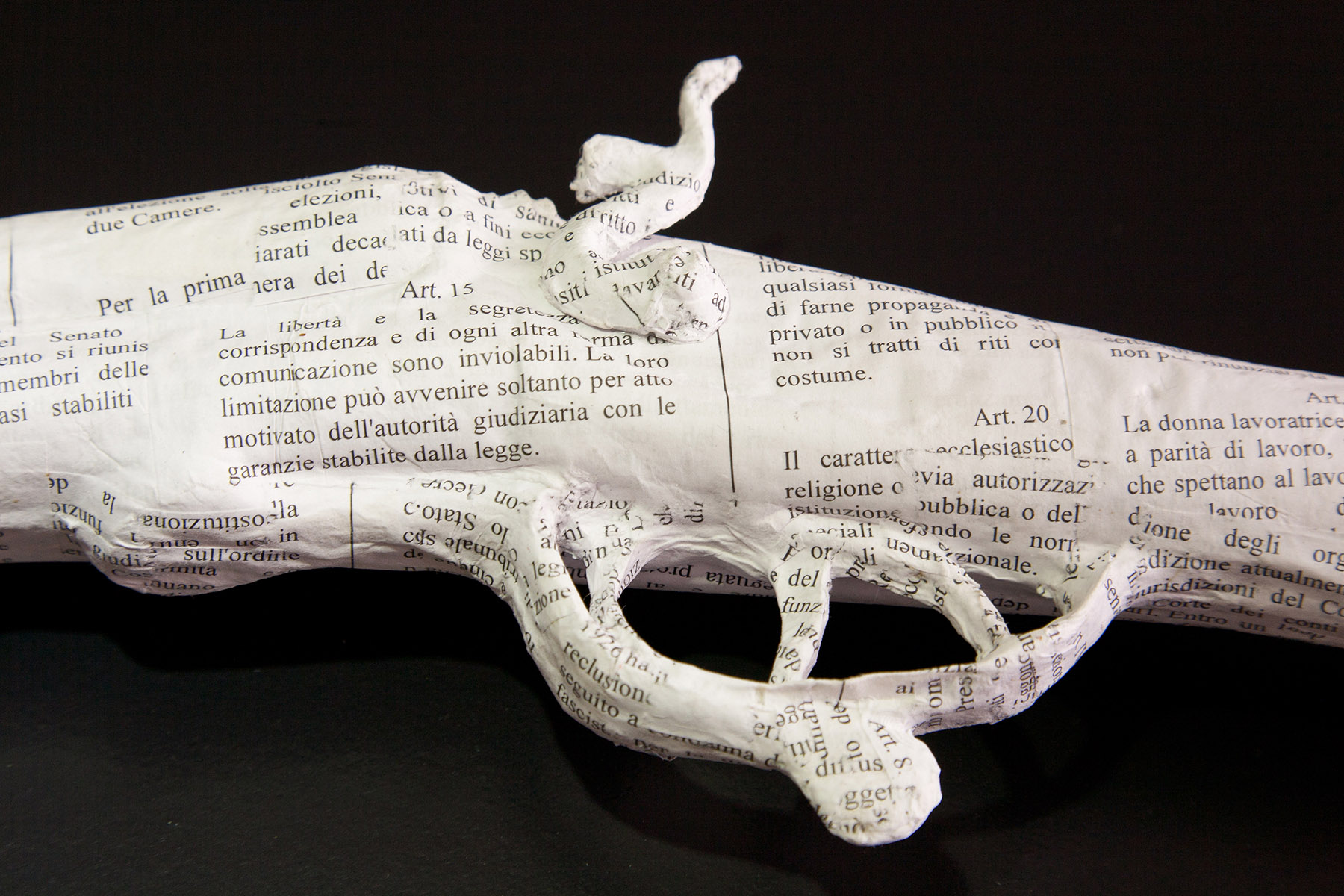23.06.2011 \\ 14.10.2011
For the occasion Mancini made a huge installation in the basement of the Foundation building, consisting of 9 tables on which lay 9 papier-mâché reproductions of weapons. These include a hand grenade, a P38, a Carcano 91 – weapons that were used during some events of the Resistance that took place in the Ponticelli neighborhood. The installation is complemented by nine audio tracks reproducing fragmentary pieces of interviews to the protagonists of such events. Domenico Antonio Mancini took the interviews from an archive that reconstructs war events that occurred in the Eastern area of Naples, from which he also drew information about the type of weapons used, the circumstances and the mood of the protagonists. The papier-mâché used to make the weapons was obtained using the pages of the Italian Constitution. Mancini had already used this method for his Untitled, 2010 consisting of a gun rack and carbines used by the partisans against the Nazi-Fascist troops. Both works are connected with the territorial context in which they are presented. They are the response to a certain climate, to a need for remembrance. They oppose to the risk of obfuscation and sabotage of history a formal and linguistic clarity corresponding to an unequivocal thought. In the formal making of the work the elements considered – the Italian Constitution and the weapons of the Resistance – become the terms of a tautological assertion. If Domenico Antonio Mancini uses the pages of the Constitution as material for his reproductions of weapons used to fight the Resistance, his thought is unequivocally clear: the two elements have a common derivation, subject and predicate reflect each other.
While an oral account is fragmentary and remains quite open, the objects made by Mancini are a closed synthesis, a punctual interpretation of the relation existing between the two elements, which caused the events to happen. So we have remembrance on one side, and on the other the object that expresses the events showing the instruments used to make them happen: the weapons and the spirit.
The object occupies the space in a clear way. Every weapon has its table and is illuminated by a lamp. The lamps are low, their light only illuminating the surface of the table, drawing the attention toward a precise point. The object is exactly what it says. It is not the initial object but the judgment it expresses. Its function is not the original one and its matter is now imbued with content. Stating that the Resistance gave rise to our Republic and that the Constitution is filled with the feelings that animated it might seem stating the obvious.
But a clear and sometimes redundant thought is an ethical and civil duty. The rigour of the definition, the perfection and circularity of the concept are a reaction to the doubt, to the alibi of complexity, to History and its events being questioned.
Francesca Boenzi
All images Courtesy Fondazione Morra Greco, Napoli
© Danilo Donzelli

